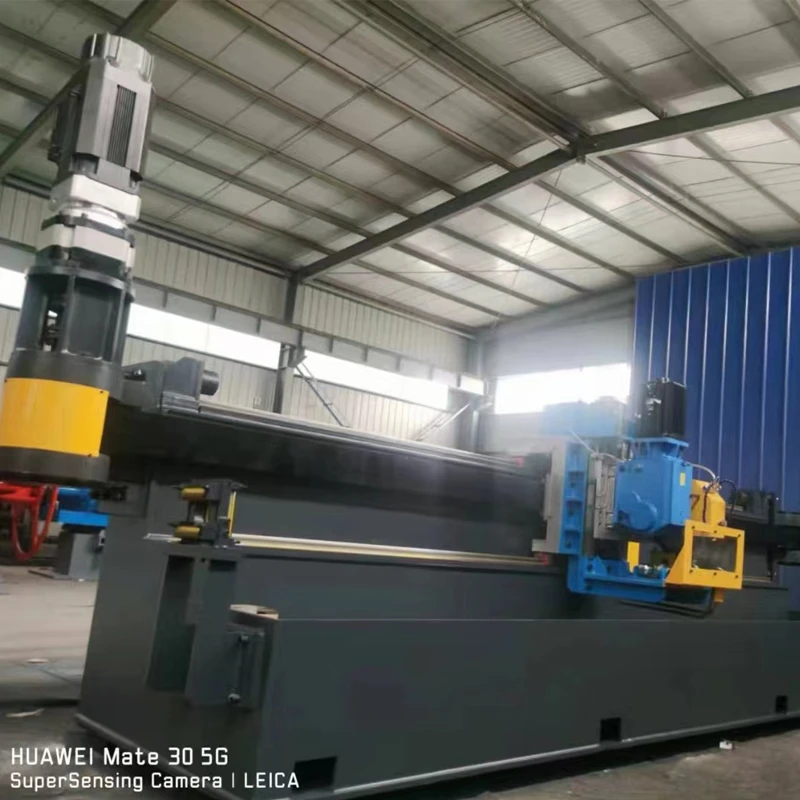Efficient Solutions for Metal Roll Forming Machinery and Equipment
Metal Roll Forming Equipment An Overview
Metal roll forming equipment is a crucial innovation in the metal fabrication industry, designed specifically for shaping and forming metal sheets into desired profiles with precision and efficiency. This process has become indispensable in various sectors, including construction, automotive, and manufacturing, where there is a consistent demand for high-quality metal components.
Understanding Metal Roll Forming
Roll forming is a continuous process that involves feeding metal strips through a series of rollers positioned in a specific sequence. Each roller gradually bends the metal into a specific shape, resulting in a finished product that maintains uniformity and high tolerances. This method is particularly advantageous for producing long lengths of parts, with minimal waste and consistent quality.
The most common materials used in roll forming include steel, aluminum, and other alloys. The equipment can handle various gauges and profiles, making it versatile for different applications. Roll forming is distinct from other metal formation techniques, such as stamping or punching, due to its ability to create custom shapes with extended lengths.
Components of Metal Roll Forming Equipment
Metal roll forming equipment comprises several critical components that work in tandem to ensure smooth operation and high productivity
1. Roll Sets These are the most vital elements of roll forming equipment. The design of the rollers determines the final shape and profile of the product. Roll sets can be customized based on the specifications required for various metal forms.
2. Feed Mechanism This component feeds the metal strip into the rollers seamlessly. An adjustable feed rate ensures that the metal is fed at the correct speed, minimizing the chances of defects during the forming process.
3. Drive System The drive system powers the rollers, typically using electric motors. It's crucial for maintaining the speed and torque necessary to form metals effectively.
4. Cutting System Often, roll forming equipment is integrated with a cutting system that trims the metal to specific lengths after it has been formed. This can be done through shear cutting, rotary cutting, or other techniques depending on the setup.
5. Control System Modern roll forming machines are equipped with advanced control systems allowing for automation and precise adjustments during operation. This includes settings for speed, temperature (for certain materials), and alignment.
Benefits of Metal Roll Forming Equipment
metal roll forming equipment

The advantages of using roll forming equipment are numerous
- Efficiency Roll forming is a continuous process, which allows for high production rates
. This efficiency can significantly reduce labor and operational costs.- Material Utilization Roll forming generates minimal waste compared to other methods, as it uses the entire strip of metal without substantial scrap.
- Customization Manufacturers can design specific roll sets to produce custom profiles to meet client needs, allowing for greater flexibility in product offerings.
- Quality and Consistency The automated nature of roll forming ensures that parts are produced with high repeatability, maintaining tight tolerances and consistent quality throughout the production run.
Applications of Metal Roll Forming Equipment
Metal roll forming is widely used in various applications
- Construction It produces components such as roofing sheets, wall panels, and structural supports that are essential in building projects.
- Automotive The automotive industry relies on roll-formed parts for frames, supports, and other structural components that require strength and durability.
- Furniture Roll forming equipment is used to create metal parts for furniture, providing aesthetic and functional components.
- HVAC Ductwork and other heating, ventilation, and air conditioning components are often manufactured using roll forming for their efficiency and structural integrity.
Conclusion
In conclusion, metal roll forming equipment represents a significant advancement in the metal fabrication industry. Its ability to produce high volumes of precise and customized components efficiently makes it an invaluable tool for manufacturers across various sectors. With ongoing advancements in technology, the future for metal roll forming appears promising, with opportunities for increased automation and further enhancements in efficiency and product quality. Whether for construction, automotive, or beyond, roll forming equipment will continue to play a key role in shaping the materials that build our world.
-
High Frequency Straight Seam Welded Pipe Production Line-BzZhou Xinghua Machinery Equipment Manufacturing Co., LTD.|line pipe steel&welded gas pipeNewsJul.30,2025
-
High Frequency Straight Seam Welded Pipe Production Line-BzZhou Xinghua Machinery Equipment Manufacturing Co., LTD.|High Precision&Automated SolutionsNewsJul.30,2025
-
High Frequency Straight Seam Welded Pipe Production Line - BzZhou Xinghua Machinery Equipment Manufacturing Co., Ltd.NewsJul.30,2025
-
High Frequency Straight Seam Welded Pipe Production Line-BzZhou Xinghua Machinery Equipment Manufacturing Co., LTD.|Precision Welding, High EfficiencyNewsJul.30,2025
-
High Frequency Straight Seam Welded Pipe Production Line|BzZhou Xinghua|Precision Welding&EfficiencyNewsJul.30,2025
-
High Frequency Straight Seam Welded Pipe Production Line - BzZhou Xinghua|Precision Engineering&EfficiencyNewsJul.30,2025


